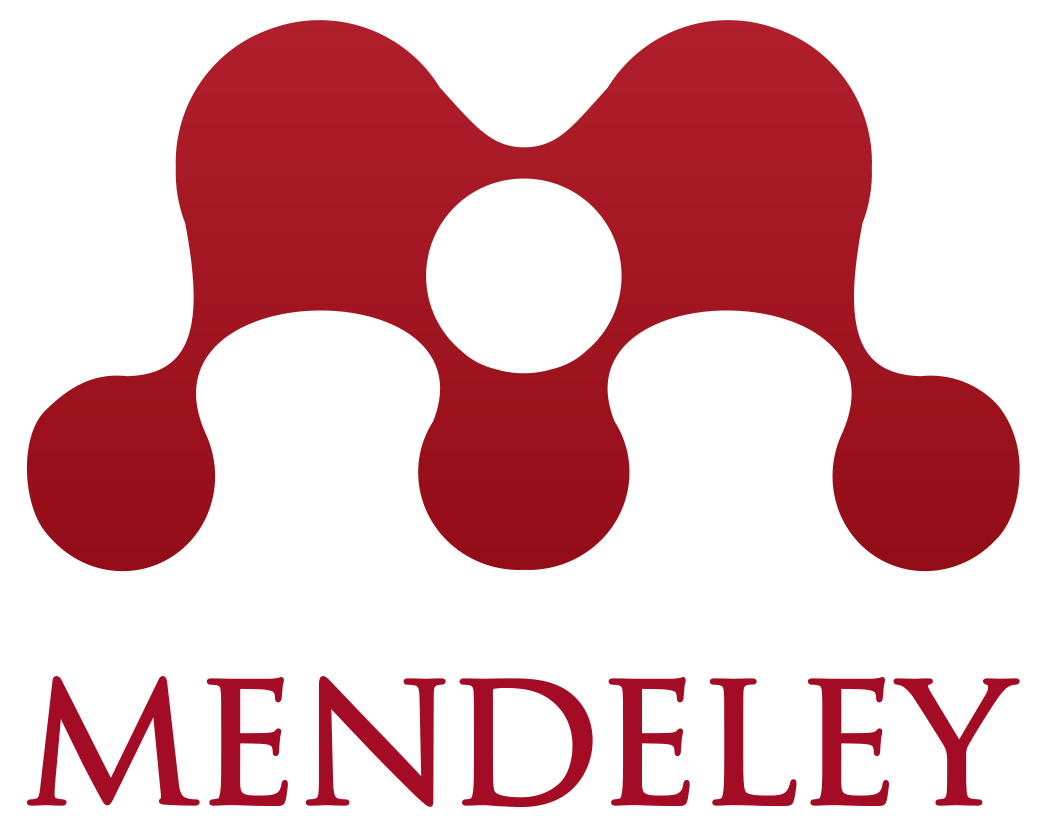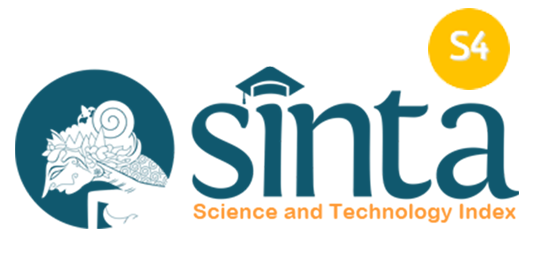Validity, Practicality, Effectiveness: Wetland Contexted-Chemical Representation Module as a Media for Learning
Abstract
Keywords
Full Text:
PDFReferences
Avraamidou, L. (2016). Studying science teacher identity: Theoretical , methodological and empirical explorations. In New Directions in Mathematics and Science Education. https://doi.org/10.1007/978-94-6300-528-9
Barke, Hand-Dieter, Hazari, A., & Yitbarek, S. (2009). Misconceptions in chemistry (addresing perceptions in chemical education). Sense Publisher. https://doi.org/10.1007/978-3-540-70989-3_2
Barke, Hans-Dieter, Harsch, G., & Schmid, S. (2012). Essentials of chemical education. In Angewandte Chemie International Edition, 6(11), 951–952. Springer.
Becker, N., Stanford, C., Towns, M., & Cole, R. (2015). Translating across macroscopic, submicroscopic, and symbolic levels: The role of instructor facilitation in an inquiry-oriented physical chemistry class. Chemistry Education Research and Practice, 16(4), 769–785. https://doi.org/10.1039/c5rp00064e
Bruce, M. R. M., Bruce, A. E., Avargil, S., Amar, F. G., Wemyss, T. M., & Flood, V. J. (2016). Polymers and Cross-Linking: A CORE Experiment to Help Students Think on the Submicroscopic Level. Journal of Chemical Education, 93(9), 1599–1605. https://doi.org/10.1021/acs.jchemed.6b00010
Corrigan, D. (2009). Chemistry teacher education to promote understanding of learning through effective reflective practice. Chemistry Education Research and Practice, 10(2), 121–131. https://doi.org/10.1039/b908249m
Darmiyanti, W., Rahmawati, Y., Kurniadewi, F., & Ridwan, A. (2017). Analisis Model Mental Siswa Dalam Penerapan Model Pembelajaran Learning Cycle 8E Pada Materi Hidrolisis Garam. JRPK: Jurnal Riset Pendidikan Kimia, 7(1), 38–51. https://doi.org/10.21009/jrpk.071.06
Gilbert, J. K., & Treagust, D. F. (2009). Introduction: Macro, submicro and symbolic representations and the relationship between them: Key Models in chemical education. In Multiple Representations in Chemical Education, MOdels and Modeling in Science Education (pp. 1–8). Springer Science + Business. https://doi.org/10.1007/978-1-4020-8872-8_1
Herdini, H., Linda, R., Abdullah, A., Shafiani, N., Darmizah, F. ‘Alaina, & Dishadewi, P. (2018). Development of interactive multimedia based on Lectora Inspire in chemistry subject in junior high school or madrasah tsanawiyah. Journal of Educational Sciences, 2(1), 46. https://doi.org/10.31258/jes.2.1.p.46-55
Hugerat, M., Mamlok-Naaman, R., Eilks, I., & Hofstein, A. (2015). Professional development of chemistry teachers for relevant chemistry education. Relevant Chemistry Education: From Theory to Practice, 369–386.
Kelly, R. M., Barrera, J. H., & Mohamed, S. C. (2010). An analysis of undergraduate general chemistry students’ misconceptions of the submicroscopic level of precipitation reactions. Journal of Chemical Education, 87(1), 113–118. https://doi.org/10.1021/ed800011a
Korniawati, A., Kusumo, E., & Susilaningsih, E. (2016). Validitas chemistry handout sebagai inovasi bahan ajar stoikiometri berstrategi pbs bervisi sets. Jurnal Inovasi Pendidikan Kimia, 10(1), 1629–1640.
Levy, S. T., & Wilensky, U. (2009). Crossing levels and representations: The connected chemistry (CC1) curriculum. Journal of Science Education and Technology, 18(3), 224–242. https://doi.org/10.1007/s10956-009-9152-8
Mensah, F. M. (2016). Positional identity as a framework to studying science teacher identity. In L. Avraamidou (Ed.), Studying Science Teacher Identity (THeoritical, Methodological, and Empirical Exploration (pp. 49–69). Sense Publisher.
Mezirow, J. (1991). Tranformative Dimensions of Adult Learning. Jossey-Bass.
Nasir, M. (2017). Analisis kesulitan belajar dan miskonsepsi mahasiswa dalam praktikum berbasis proyek. Edu Sains: Jurnal Pendidikan Sains & Matematika, 5(1), 56. https://doi.org/10.23971/eds.v5i1.602
Normalasarie, & Aulia, S. (2019). Pengembangan media pembelajaran ilmu sosial budaya berbasis kearifan lokal (kain sasirangan khas kalimantan). Elementa: Jurnal Prodi Pgsd Stkip Pgri Banjarmasin, 1(1), 61–70.
Nurhasnah, N., Kasmita, W., Aswirna, P., & Abshary, F. I. (2020). Developing physics e-module using “construct 2” to support students’ independent learning skills. Thabiea : Journal of Natural Science Teaching, 3(2), 79. https://doi.org/10.21043/thabiea.v3i2.8048
Ott, N., Brünken, R., Vogel, M., & Malone, S. (2018). Multiple symbolic representations: The combination of formula and text supports problem solving in the mathematical field of propositional logic. Learning and Instruction, 58(April), 88–105. https://doi.org/10.1016/j.learninstruc.2018.04.010
Özgür, S. D. (2018). The effect of learning styles on prospective chemistry and science teachers’ self-regulated learning skills. Cypriot Journal of Educational Sciences, 13(4), 521–528. https://doi.org/10.18844/cjes.v13i4.3185
Petrucci, R. H., Harwood, W. S., Herring, G. F., & Madura, J. D. (2011). Kimia Dasar (Prinsip-prinsip dan Aplikasi Modern) (A. Safitri (ed.)). Erlangga.
Rahmawati, Y., & Taylor, P. C. (2018). “The fish becomes aware of the water in which it swims”: revealing the power of culture in shaping teaching identity. Cultural Studies of Science Education, 13(2), 525–537. https://doi.org/10.1007/s11422-016-9801-1
Rosalina Rawa, N., & Sutawidjaja, A. (2016). Pengembangan perangkat pembelajaran berbasis model learning cycle-7e pada materi trigonometri untuk meningkatkan kemampuan koneksi matematis siswa. Jurnal Pendidikan: Teori, Penelitian, Dan Pengembangan, 1(6), 1042–1055.
Rui, R., Lim, X., Ang, A. S., Fung, F. M., Kong, L., Wing, C., & Road, K. R. (2017). Application of Social Media in Chemistry Education : Incorporating Instagram and Snapchat in Laboratory Teaching. ACS Symposium Series, 193–195.
Ryan, S., & Herrington, D. G. (2014). Sticky Ions : A Student-Centered Activity Using Magnetic Models to Explore the Dissolving of Ionic Compounds. Journal of Chemical Education, 91, 860–863.
Sumintono, B., & Widhiarso, W. (2015). Aplikasi pemodelan rasch pada assessment pendidikan. Penerbit Trim Komunikata.
Taber, K. S. (2002). Chemical misconceptions: Prevention, diagnosis and cure. Vol. 2: Classroom Resources. Royal Society of Chemistry.
Taber, K. S. (2017). Identifying research foci to progress chemistry education as a field. Educación Química, 28(2), 66–73. https://doi.org/10.1016/j.eq.2016.12.001
Treagust, D. F., Chittleborough, G., & Mamiala, T. L. (2003). The role of submicroscopic and symbolic representations in chemical explanations. International Journal of Science Education, 25, 1353–1368.
Wahyuni, Z. A., & Yerimadesi, Y. (2021). Praktikalitas e-modul kimia unsur berbasis guided discovery learning untuk siswa sekolah menengah atas. Edukatif : Jurnal Ilmu Pendidikan, 3(3), 680–688.
Yuliati, L. (2013). Efektivitas Bahan Ajar Ipa Terpadu Terhadap Kemampuan Berpikir Tingkat Tinggi Siswa Smp. Jurnal Pendidikan Fisika Indonesia, 9, 53–57.
DOI: https://doi.org/10.20527/jmscedu.v2i1.5067
Refbacks
- There are currently no refbacks.

This work is licensed under a Creative Commons Attribution 4.0 International License.

Journal Of Mathematics Science and Computer Education is licensed under a Creative Commons Attribution-ShareAlike 4.0 International License.









.jpg)
1.png)

